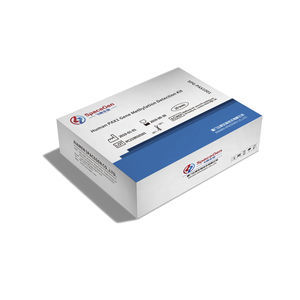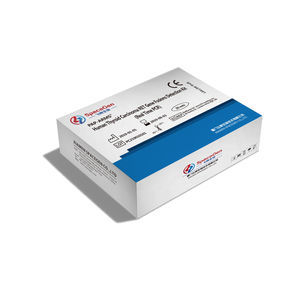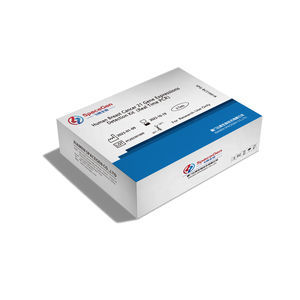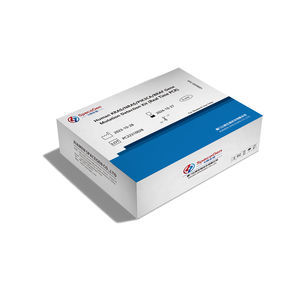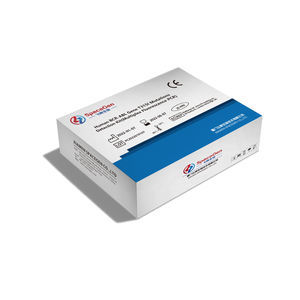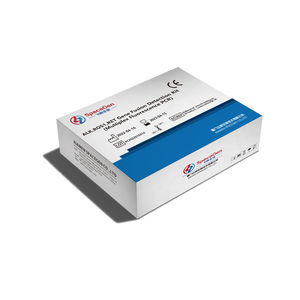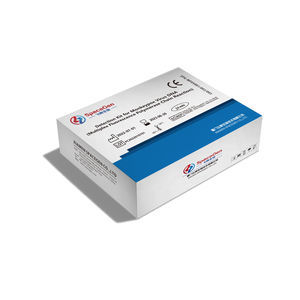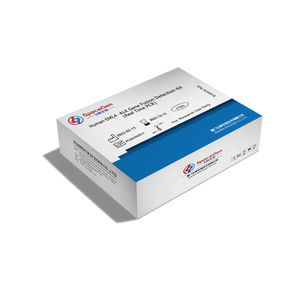

- Company
- Products
- Catalogs
- News & Trends
- Exhibitions
Research detection kit PC202302011for lung canceroncologyRET gene
Add to favorites
Compare this product
Characteristics
- Applications
- for research, for lung cancer
- Application field
- oncology
- Tested parameter
- RET gene, RET fusion
- Sample type
- cell
- Analysis mode
- molecular
Description
The RET proto-oncogene is located at 10q11.2 and is 60 kb , including 21 exons. After the RET gene is fused, dimerization can be completed without ligands, which will cause the RET tyrosine kinase region and downstream MAPK, PI3K/AKT and other signaling pathways continuously activated,leading to cellular proliferation, migration, and differentiation. Gain-of-function alterations in RET have been implicated in human malignancy. KIF5B is the most common RET fusion partner in NSCLC, and seven different KIF5B-RET variants have been identified
RET FUSION AND TARGETED THERAPY OF LUNG CANCER
In 2020, the FDA successively approved Selpercatinib and Pralsetinib for the systemic treatment of patients with RET fusion-positive metastatic non-small cell lung cancer (NSCLC). Based on the approval of the drug, the NCCN include RET fusion detection in the recommendation of NSCLC molecular detection.
DETECTION SIGNIFICANCE
1. Inoperable stage III and IV NSCLC patients should be detected for RET gene fusion before systemic treatment, and treatment should be guided by molecular classification.
2. Select patients for the targeted treatment of NSCLC based on the presence of RET positivity.
FEATURES & ADVANTAGES
1. Accuracy and Reliability:Use pre-load PCR tube to effectively avoid cross-contamination.
2. High Sensitivity: Sensitivity can reach as low as 100 copies in RNA.
3. Comprehensive Coverage: Covers the 7 most common KIF5B-RET variants in NSCLC.
DETECTION PROCESS
1、Nucleic Acid Extraction
3、Amplification
4、Data Analysis
Catalogs
No catalogs are available for this product.
See all of SPACEGEN‘s catalogsRelated Searches
- Assay kit
- Blood assay kit
- Immunoassay assay kit
- Plasma assay kit
- Infectious disease detection kit
- Analysis software
- Molecular test kit
- Respiratory infection test kit
- Whole blood detection kit
- Optical assay kit
- Clinical assay kit
- Fluorescence assay kit
- Viewer software
- Real-time PCR test kit
- Research assay kit
- Laboratory software
- Windows software
- Laboratory detection kit
- Cell assay kit
- Oncology test kit
*Prices are pre-tax. They exclude delivery charges and customs duties and do not include additional charges for installation or activation options. Prices are indicative only and may vary by country, with changes to the cost of raw materials and exchange rates.



